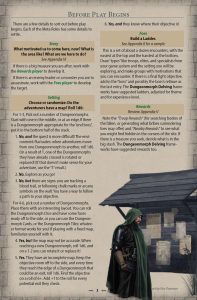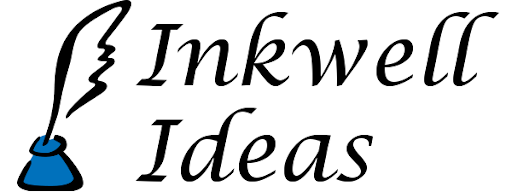Upcoming Dungeonmorphs (connectable dungeons on dice & cards) Solo/Co-op Support
 Inkwell Ideas has been working up a system to support solo & co-op dungeon crawls. We are using some new Dungeonmorph Dice & Card designs that we’ll be Kickstarting soon.
Inkwell Ideas has been working up a system to support solo & co-op dungeon crawls. We are using some new Dungeonmorph Dice & Card designs that we’ll be Kickstarting soon.
Here is the high-level summary:
- It isn’t its own RPG system–it supports your system of choice.
- We identify 4 roles for solo/co-op play (in addition to players having characters of their own): Story: Develop the adventure setup for the adventure and run any non-combat NPCs; Setting: Develop and explain the surroundings; Foes: Generate, customize, and run opponents & traps; Rewards: Generate and interpret treasures to find.
- You can split the roles among the player(s). Someone good at improv can be the setting person; someone who knows the RPG system well can run the foes, etc.
- We have an oracle and charts to support each role.
- We have a quickstart guide which include a general version of the charts.
- A key thing is what we’re calling the “ladder”–a list of groups of foes to encounter. You might make ordered list of 8 or 10 of them appropriate to the setting with a boss at/near the bottom, and each time you encounter a foe you cross that line out they progress in difficulty in general but not exactly.
- We also have a random encounter counter which you roll each time you come to an empty room or corridor or take time to search or rest. You also increment it each time you take extra time to be stealthy, search an area, or each time it finds nothing–so your chance to encounter something gets higher and higher. Its a way to pay a price for spending extra time.
We’ve also got a more specific example of a Delve for Tomb Raiding (one of the new Dungeonmorph sets is “Crypts”). You can check that out here.
And this last sample is an intro & handful of examples of our new format for descriptions of the Dungeonmorphs. The core idea is we’re giving 6 ideas for what is in each major area of each design. Three follow a theme and three are more random. So when you are exploring an area you can use the theme that you’ve picked, or if that doesn’t work for you you can pick one of the other ideas. These all support the “Setting” role–which the frameworks have charts to role for random features, these descriptions are more detailed and fit the area more specifically.
